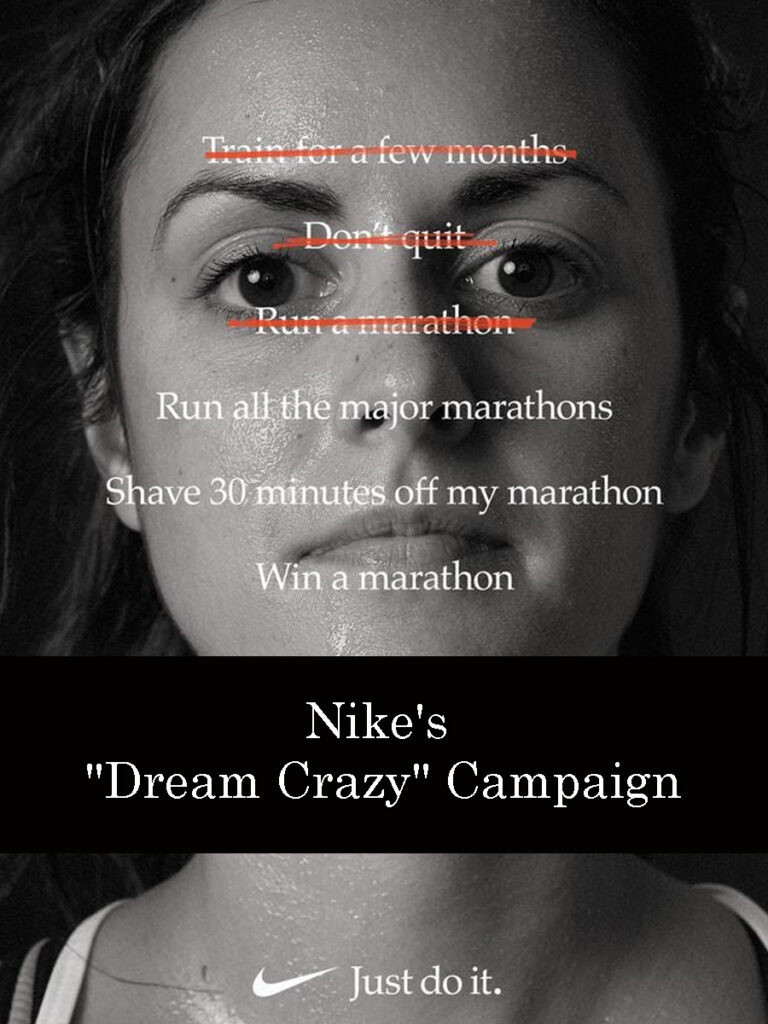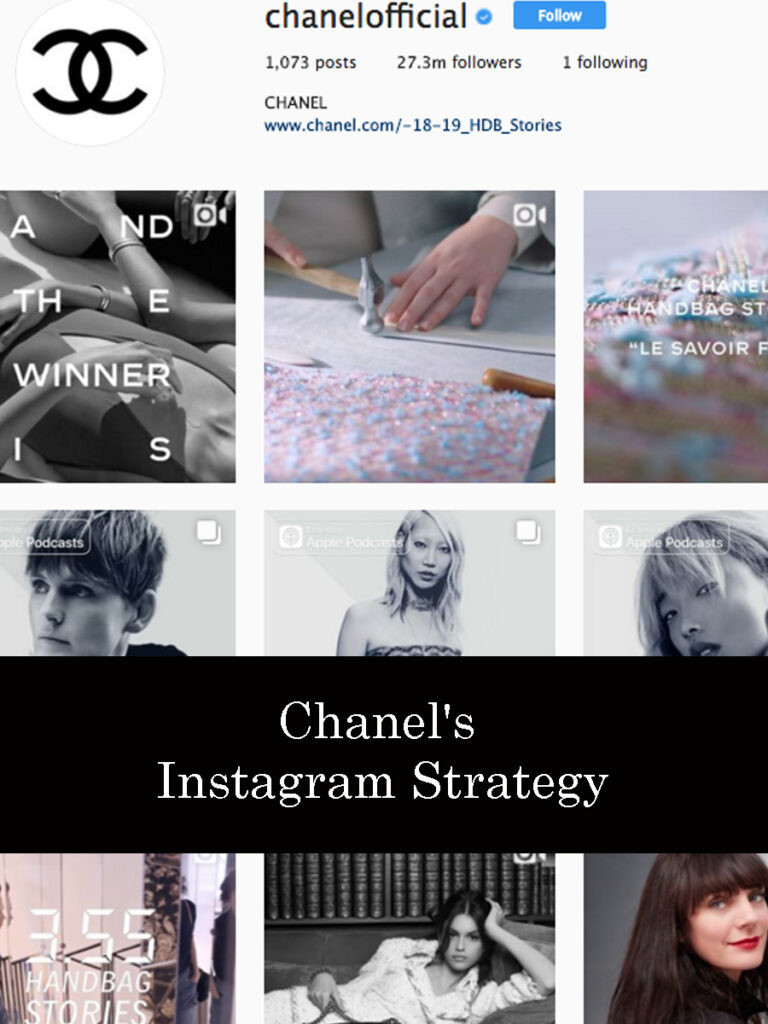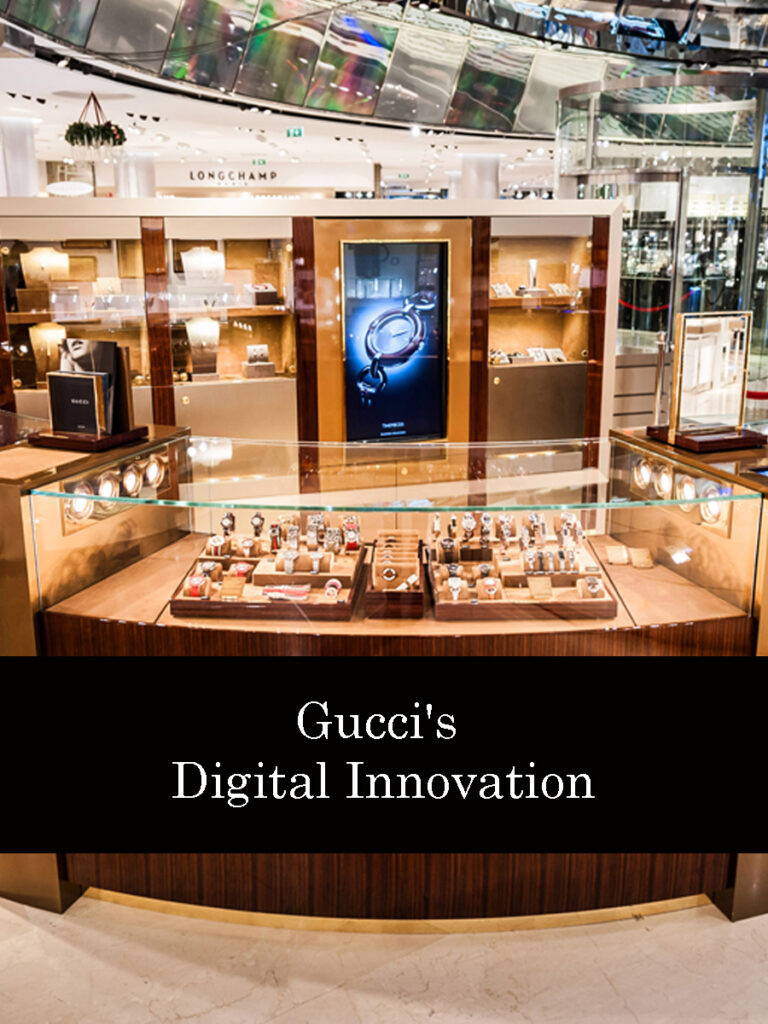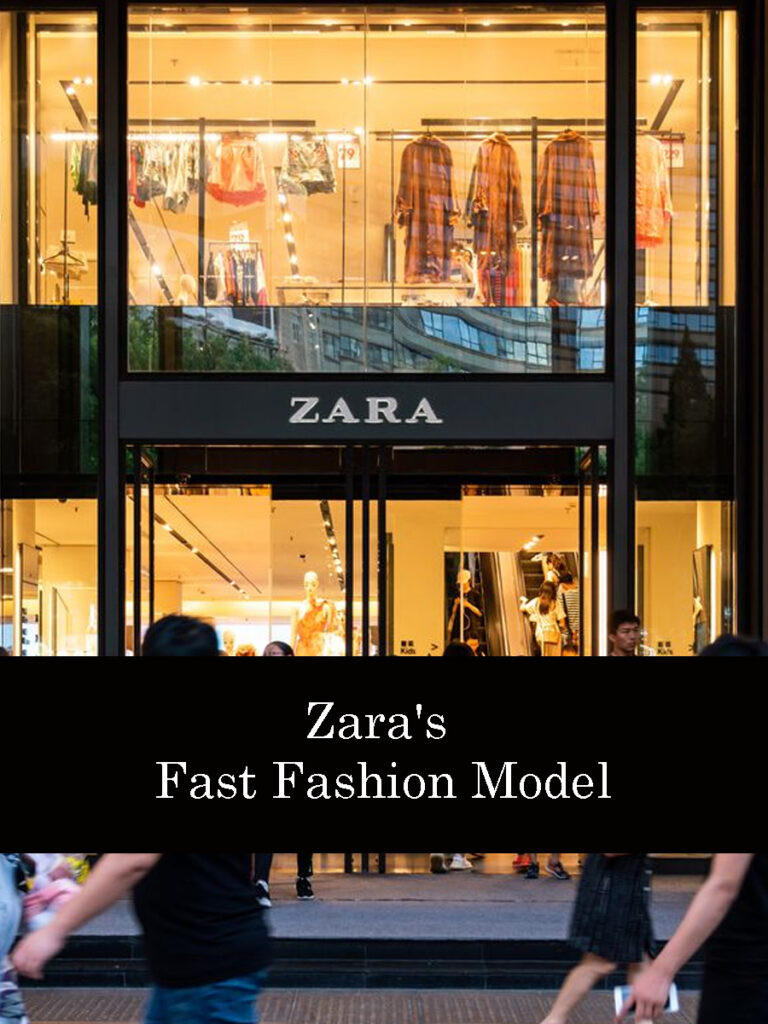Fashion marketing case studies illuminate how brands connect with audiences, boost sales, and cultivate brand recognition. At mens-fashion.net, we dissect these strategies to offer actionable insights for your own style evolution. Dive in to discover how leading brands leverage inventive campaigns and digital strategies to redefine men’s fashion and consumer engagement, providing solutions for staying ahead in the dynamic fashion landscape. From understanding customer preferences to utilizing cutting-edge techniques in fashion promotion, this article will help you to understand mens style trends and effective branding.
1. Introduction to Fashion Marketing for Men
Fashion marketing is the engine that drives brand recognition, customer loyalty, and ultimately, sales. In the fast-paced world of men’s fashion, effective marketing is crucial for brands looking to stand out. The fashion industry is exceptionally dynamic; therefore, staying relevant in the industry can be a difficult task. From the biggest luxury brands to the smallest retailers in cities world over, everyone involved in the business of fashion needs to maintain a unique relation with the consumer. Marketing is the bridge that joins these two ends. Fashion marketing plays a pivotal role in defining brands, driving sales, and shaping consumer perceptions.
For men, this means understanding their unique needs, preferences, and aspirations when it comes to style. It involves crafting campaigns that resonate on a personal level, showcasing clothing and accessories that not only look good but also reflect their individual identities. Today’s best fashion brands from high-end luxury labels to fast-fashion giants depend on successful marketing campaigns, as they have the power to captivate audiences, spark trends, and leave a lasting impact.
1.1 Why Fashion Marketing Case Studies Matter
Fashion marketing case studies are important because they provide insights into what works and what doesn’t in the fashion industry. By analyzing successful marketing campaigns, brands can learn valuable lessons about consumer behavior, messaging, and strategy. They are more than academic exercises; they’re roadmaps to success, especially in the competitive world of men’s fashion.
These studies offer a deep dive into the strategies employed by leading brands, helping businesses understand how to capture attention, build brand loyalty, and drive sales. Whether you’re a seasoned marketer or just starting out, understanding these cases can provide a competitive edge. Studying these campaigns can help brands fine-tune their approaches and stay relevant in a market that’s constantly changing.
1.2 How to Apply Case Study Learnings
Take the time to review how the brand integrates men’s style trends into their marketing. Brands use diverse tools such as fashion promotion or mens style trends to get the message across. Applying the lessons from fashion marketing case studies involves more than just replicating successful campaigns. It requires a strategic approach tailored to your brand’s specific goals and target audience.
- Understand Your Audience: Adapt strategies to fit the unique preferences and needs of your target demographic.
- Test and Iterate: Implement campaigns on a small scale, analyze the results, and refine your approach based on real-world data.
- Stay Current: The fashion landscape is constantly evolving, so continuously update your knowledge and adapt your strategies accordingly.
1.3 The mens-fashion.net Advantage
At mens-fashion.net, we are dedicated to providing you with the latest trends, expert advice, and actionable insights to elevate your style. Whether you’re looking to revamp your wardrobe, stay ahead of the curve, or simply explore new looks, our website is your ultimate resource for all things men’s fashion. We also provide you with insights into advertising campaigns and the newest collections to keep you updated on the best offers in the fashion world.
2. Nike’s “Dream Crazy” Campaign: A Bold Statement
Nike’s “Dream Crazy” campaign remains a defining moment in fashion marketing history. Launched in September 2018, this campaign went beyond selling products; it sparked conversations, challenged norms, and inspired individuals to overcome limitations. This campaign epitomized Nike’s commitment to empowerment and social justice. It showcased how brands can effectively blend marketing with social messaging, influencing consumer perceptions.
2.1 The Kaepernick Controversy
The focal point of the campaign was Colin Kaepernick, the former NFL quarterback whose decision to kneel during the national anthem to protest racial injustice ignited widespread debate. Nike’s choice to feature Kaepernick in their advertisements sparked intense reactions, with some praising the brand for its courageous stance and others criticizing it for being overly political.
2.2 Transcending Controversy
“Dream Crazy” transcended controversy by celebrating resilience and determination. The campaign featured powerful commercials and print ads showcasing diverse individuals who defied odds to achieve their dreams.
One of the most memorable moments was a commercial narrated by Kaepernick, urging viewers to “believe in something, even if it means sacrificing everything.” The ad included athletes, activists, and everyday people who had overcome obstacles. From Serena Williams to LeBron James to a young wrestler with no legs, the message was clear: greatness knows no boundaries.
2.3 Social Media Amplification
Nike leveraged social media to amplify the campaign’s message, encouraging people to share their own stories of perseverance using the hashtag #DreamCrazy. This interactive approach fostered community and allowed individuals to see themselves reflected in the campaign’s narrative.
2.4 Business Impact
Despite initial backlash, Nike’s sales soared following the campaign’s launch. The company’s stock price reached an all-time high, and its market share increased significantly. According to Edison Trends, the campaign generated significant buzz and earned media coverage, leading to a surge in Nike’s online sales by 31% within days of its launch.
2.5 Lessons for Mens-Fashion.net Readers
The “Dream Crazy” campaign teaches mens-fashion.net readers that brands can create powerful connections with consumers by embracing social issues, championing diversity, and inspiring individuals.
Key Takeaways from Nike’s “Dream Crazy” Campaign:
| Lesson | Description |
|---|---|
| Embrace Controversy | Taking a stand on social issues can be morally principled and financially rewarding. |
| Champion Diversity | Showcasing individuals from diverse backgrounds resonates with a broader audience. |
| Inspire Individuals | Encouraging people to pursue their dreams fosters meaningful connections with consumers. |




3. Chanel’s Instagram Strategy: Elegance in the Digital Age
Chanel, the iconic luxury fashion brand, has masterfully leveraged Instagram as a pivotal component of its marketing strategy. Known for its meticulously curated approach reflecting elegance, sophistication, and timelessness, Chanel’s Instagram strategy serves as a blueprint for luxury brands seeking to engage with their audience effectively.
3.1 Quality Over Quantity
Chanel’s Instagram strategy focuses on quality over quantity, creating visually stunning posts that capture its brand identity. Every post, from product shots to behind-the-scenes glimpses, is meticulously curated to evoke luxury and exclusivity.
3.2 Storytelling Through Imagery
The brand weaves narratives that resonate with its audience through imagery, captions, and hashtags. Chanel uses Instagram to share the stories behind its brand in an authentic and compelling way, whether it’s celebrating craftsmanship or highlighting creative vision.
3.3 Cultural Engagement
Chanel regularly partners with influencers, artists, and celebrities to create content that speaks to broader cultural trends. By aligning with influencers sharing its values, Chanel reaches new audiences and stays relevant.
3.4 Leveraging Instagram Features
Chanel leverages Instagram features like Stories, IGTV, and Reels to engage its audience in innovative ways. Whether offering behind-the-scenes content or hosting live Q&A sessions, Chanel keeps followers engaged.
3.5 Community Building
Chanel encourages user-generated content through branded hashtags and reposts, fostering a sense of community and inclusivity. This strengthens relationships with customers and attracts new ones who aspire to be part of the Chanel lifestyle.
3.6 Business Success
Chanel’s Instagram strategy has successfully driven brand awareness, engagement, and sales. By investing in high-quality content, storytelling, cultural engagement, and community building, Chanel has become a leader in luxury fashion on Instagram.
3.7 Takeaways for Mens-Fashion.net Readers
Chanel’s Instagram strategy demonstrates how luxury brands can navigate the digital landscape while staying true to their values. By prioritizing quality, storytelling, cultural engagement, and community building, Chanel resonates with audiences worldwide.
Key Elements of Chanel’s Instagram Strategy:
| Element | Description |
|---|---|
| High-Quality Content | Visually stunning posts that capture the essence of the brand’s identity. |
| Storytelling | Weaving narratives that resonate with the audience on a deeper level. |
| Cultural Engagement | Partnering with influencers and celebrities to tap into broader cultural trends. |
| Community Building | Fostering a sense of community and inclusivity among followers. |
4. Gucci’s Digital Innovation: Redefining Luxury
Gucci’s digital innovation and marketing strategy highlight the brand’s ability to thrive in luxury fashion. By understanding its audience and embracing new technologies, Gucci has transformed how consumers engage with the brand both online and offline.
4.1 Immersive Customer Experiences
Gucci’s website and mobile app are designed to provide immersive and interactive experiences. High-quality product images, detailed descriptions, and sizing information replicate the luxury retail experience online.
4.2 Augmented Reality (AR) and Virtual Reality (VR)
Gucci uses emerging technologies like AR and VR to enhance the online shopping experience. The “Gucci Sneaker Garage,” an AR feature on its app, allows users to virtually try on sneakers, adding fun and interactivity.
4.3 Social Media and Influencer Marketing
Gucci has cultivated a strong social media presence, sharing behind-the-scenes content, campaign teasers, and collaborations with artists and influencers. By using social media for storytelling, Gucci connects with its audience on a personal level.
4.4 E-Commerce and Digital Platforms
Gucci has embraced e-commerce and digital platforms to reach new markets, partnering with online luxury retailers like Farfetch and Net-a-Porter. The brand also experiments with exclusive online-only collections and limited-edition drops.
4.5 Content Creation and Brand Engagement
Gucci’s digital campaigns are known for creativity, authenticity, and cultural relevance. Collaborations with artists, musicians, and filmmakers create content that deeply resonates with its audience.
4.6 Sustainability and Ethical Practices
Gucci is committed to sustainability through initiatives like “Gucci Equilibrium,” educating consumers about its efforts and fostering community around shared values.
4.7 Business Success
Gucci’s online sales have grown significantly, outpacing the luxury market. Digital technology, social media, e-commerce, and sustainability have positioned Gucci as a leader in luxury fashion. Gucci’s digital efforts have yielded impressive results, with the brand reporting a 86% increase in online sales in 2020 (source: Business of Fashion).
4.8 Key Points for Mens-Fashion.net Readers
Gucci’s digital innovation shows how brands can redefine luxury by embracing technology, prioritizing sustainability, and creating engaging online experiences.
Gucci’s Digital Innovation Strategies:
| Strategy | Description |
|---|---|
| AR and VR Integration | Enhancing online shopping experiences with augmented and virtual reality technologies. |
| Social Media Storytelling | Connecting with audiences on a personal level through engaging and authentic social media content. |
| E-Commerce Expansion | Reaching new markets and demographics through partnerships with online luxury retailers. |
| Sustainability Initiatives | Promoting environmental and social responsibility through dedicated platforms like “Gucci Equilibrium.” |
5. Zara’s Fast Fashion Model: Revolutionizing Retail
Zara, the Spanish fast-fashion retailer, has transformed the fashion industry with its unique business model and innovative marketing strategies. Founded by Amancio Ortega Gaona in 1975, Zara quickly emerged as a disruptor, offering affordable, trendy clothing that adapts to consumer preferences.
5.1 The Fast Fashion Revolution
Zara’s success is built on its fast fashion model, enabling quick responses to trends and delivering new collections within weeks. Unlike traditional retailers with long planning cycles, Zara’s agile processes capitalize on emerging trends.
5.2 Vertical Integration
Zara controls its supply chain, from design and manufacturing to distribution and retailing. This integration minimizes lead times and rapidly responds to consumer demand.
5.3 Just-In-Time Production
Zara produces small batches of clothing and delivers new products to stores multiple times a week. This ensures stores are constantly stocked with fresh inventory, creating urgency and excitement.
5.4 Data-Driven Decisions
Zara uses customer data and sales analytics to inform design and merchandising decisions. Monitoring sales performance and customer feedback allows Zara to adjust product offerings.
5.5 Exclusive Collaborations
Zara frequently releases limited edition collections and collaborations with designers, celebrities, and influencers. These partnerships generate buzz and drive traffic to stores.
5.6 Online and Offline Integration
Zara’s marketing creates urgency around its products both online and offline, using digital and traditional tactics.
5.7 Social Media Presence
Zara has a strong social media presence, sharing product updates and styling tips on platforms like Instagram and Facebook. User-generated content and influencer partnerships expand its reach.
5.8 Content Marketing
Zara produces high-quality content for its website, blog, and social media, positioning itself as a fashion authority.
5.9 Immersive Store Experience
Zara’s stores create a unique shopping experience, with frequent updates to layouts and visual merchandising to reflect trends and seasonal themes.
5.10 E-Commerce Strategy
Zara’s website and mobile app offer a seamless shopping experience with online-exclusive collections and fast shipping, attracting digital-savvy shoppers.
5.11 Loyalty Programs
Zara engages customers through loyalty programs, email newsletters, and targeted promotions, encouraging them to stay informed about new arrivals and events.
5.12 Key Points for Mens-Fashion.net Readers
Zara’s fast fashion model shows how brands can stay ahead by embracing agility, innovation, and customer-centricity.
Zara’s Key Fast Fashion Strategies:
| Strategy | Description |
|---|---|
| Agile Production | Responding quickly to emerging trends and delivering new collections within weeks. |
| Vertical Integration | Controlling the entire supply chain to minimize lead times and respond rapidly to consumer demand. |
| Data-Driven Decisions | Using customer data and sales analytics to inform design and merchandising decisions. |
| Integrated Marketing | Creating urgency and excitement around products through a combination of digital and traditional tactics. |
6. Real-World Applications for Mens-Fashion.net Readers
Understanding fashion marketing case studies equips you with the knowledge to make informed decisions. By examining successful campaigns, you can identify strategies that resonate with your target audience and drive measurable results. Whether you’re a small business owner, a marketing professional, or simply a fashion enthusiast, these insights can help you navigate the complex world of fashion marketing.
6.1 Understanding Consumer Behavior
Case studies provide valuable insights into how consumers behave in response to marketing campaigns. By analyzing consumer reactions, you can gain a deeper understanding of their preferences, motivations, and decision-making processes. This knowledge can inform your marketing strategies and help you tailor your messaging to resonate with your target audience.
6.2 Developing Effective Messaging
Crafting compelling messages is essential for capturing the attention of consumers and driving engagement. Case studies showcase how successful brands develop messaging that aligns with their brand values and resonates with their target audience. By studying these examples, you can learn how to create messaging that communicates your brand’s unique value proposition and inspires consumers to take action.
6.3 Optimizing Your Marketing Strategy
A well-defined marketing strategy is crucial for achieving your business objectives. Case studies offer insights into how successful brands develop and implement effective marketing strategies. By studying these examples, you can learn how to identify your target audience, set measurable goals, and allocate your resources effectively.
7. Actionable Tips for Improving Your Fashion Marketing
Now that we’ve explored several fashion marketing case studies, let’s discuss some actionable tips that you can implement to improve your own marketing efforts. These tips are designed to help you apply the lessons learned from the case studies and achieve measurable results.
7.1 Define Your Target Audience
Before launching any marketing campaign, it’s essential to define your target audience. This involves identifying the demographic, psychographic, and behavioral characteristics of your ideal customer. By understanding your target audience, you can tailor your messaging and choose the most effective marketing channels to reach them.
7.2 Set Measurable Goals
Setting measurable goals is essential for tracking the success of your marketing campaigns. Whether your goal is to increase brand awareness, drive sales, or generate leads, it’s important to define specific, measurable, achievable, relevant, and time-bound (SMART) goals.
7.3 Choose the Right Marketing Channels
With so many marketing channels available, it’s important to choose the ones that are most effective for reaching your target audience. This may involve using a combination of digital marketing channels, such as social media, email marketing, and search engine optimization (SEO), as well as traditional marketing channels, such as print advertising and direct mail.
7.4 Create Compelling Content
Creating compelling content is essential for capturing the attention of consumers and driving engagement. This may involve producing blog posts, articles, videos, infographics, and other types of content that provide value to your target audience.
7.5 Leverage Social Media
Social media is a powerful tool for reaching and engaging with consumers. By creating a strong social media presence, you can build brand awareness, drive traffic to your website, and generate leads.
7.6 Monitor Your Results
Monitoring your results is essential for tracking the success of your marketing campaigns. This involves tracking key metrics, such as website traffic, social media engagement, and sales conversions. By monitoring your results, you can identify what’s working and what’s not, and make adjustments to your strategy accordingly.
8. Future Trends in Fashion Marketing
The fashion industry is constantly evolving, and marketing strategies must adapt to keep pace with changing consumer behavior and emerging technologies. Here are some future trends in fashion marketing that you should be aware of.
8.1 Personalization
Personalization involves tailoring marketing messages and offers to individual consumers based on their preferences, behaviors, and past purchases. By personalizing your marketing efforts, you can increase engagement, drive sales, and build customer loyalty.
8.2 Artificial Intelligence (AI)
AI is transforming the way brands interact with consumers. AI-powered chatbots can provide personalized customer service, while AI-driven analytics can help brands gain deeper insights into consumer behavior.
8.3 Virtual and Augmented Reality (VR/AR)
VR and AR technologies offer new ways for consumers to experience fashion. Virtual dressing rooms allow consumers to try on clothes virtually, while AR apps provide personalized styling advice.
8.4 Sustainability
Sustainability is becoming increasingly important to consumers, and brands are responding by adopting more sustainable practices. Marketing campaigns that highlight a brand’s commitment to sustainability can resonate with consumers and drive sales.
8.5 Inclusivity
Inclusivity involves representing diverse body types, ethnicities, and genders in marketing campaigns. By embracing inclusivity, brands can connect with a broader audience and build a more positive brand image.
9. The Mens-Fashion.Net Advantage: Your Guide to Style
At mens-fashion.net, our mission is to empower you with the knowledge and resources you need to elevate your style. We provide expert advice, trend updates, and actionable tips to help you navigate the complex world of men’s fashion. Whether you’re looking to revamp your wardrobe, stay ahead of the curve, or simply explore new looks, our website is your ultimate resource.
Here’s how mens-fashion.net can help you stay stylish:
| Feature | Description |
|---|---|
| Trend Spotting | Stay updated on the latest fashion trends for men. |
| Style Advice | Get expert tips on how to dress for different occasions and body types. |
| Product Reviews | Read unbiased reviews of clothing, accessories, and grooming products. |
| Shopping Guides | Find the best places to shop for men’s fashion. |
| Community Forum | Connect with other fashion enthusiasts and share your style ideas. |
Ready to take your style to the next level? Visit mens-fashion.net today and discover a world of fashion inspiration.
10. Frequently Asked Questions (FAQ) about Fashion Marketing
Navigating the world of fashion marketing can raise many questions. Here are some frequently asked questions to help clarify key concepts and strategies.
-
What is fashion marketing?
Fashion marketing is the process of promoting and selling fashion products and services. It involves understanding consumer behavior, creating compelling messaging, and using the right channels to reach the target audience.
-
Why is fashion marketing important?
Fashion marketing is essential for building brand awareness, driving sales, and establishing a strong presence in the competitive fashion industry.
-
What are some key elements of a successful fashion marketing campaign?
Key elements include a well-defined target audience, measurable goals, compelling content, and effective use of marketing channels.
-
How can social media be used in fashion marketing?
Social media can be used to build brand awareness, engage with consumers, and drive traffic to a website.
-
What are some emerging trends in fashion marketing?
Emerging trends include personalization, artificial intelligence, virtual and augmented reality, sustainability, and inclusivity.
-
How can I measure the success of my fashion marketing campaigns?
You can measure success by tracking key metrics such as website traffic, social media engagement, and sales conversions.
-
What is influencer marketing in the context of fashion?
Influencer marketing involves collaborating with social media influencers to promote fashion products and services.
-
How does content marketing contribute to fashion branding?
Content marketing helps brands establish themselves as authorities in the fashion industry by providing valuable information and styling advice.
-
What role does data analytics play in fashion marketing?
Data analytics helps brands understand consumer behavior, optimize marketing campaigns, and make informed decisions.
-
How can a small fashion business compete with larger brands in marketing?
Small businesses can compete by focusing on niche markets, leveraging social media, and providing personalized customer experiences.
Conclusion: Elevate Your Style with Fashion Marketing Insights
These fashion marketing case studies demonstrate how brands engage consumers, drive sales, and build brand equity. Success in fashion marketing involves creativity, relevance, and the ability to forge meaningful connections. Stay vigilant and adaptive, constantly refining your strategies to stay relevant in this changing landscape, and visit mens-fashion.net to learn even more ways to elevate your style.
From taking a stand on social issues to leveraging social media, embracing digital innovation, or adopting an agile business model, successful fashion marketing campaigns are characterized by creativity, relevance, and the ability to forge meaningful connections with their target audience. As the industry continues to evolve, brands must remain vigilant and adaptive, constantly refining their strategies to stay relevant in an ever-changing landscape. Ready to explore more?
Explore the latest trends, tips, and insights at mens-fashion.net and transform your style today. Connect with us at 227 W 27th St, New York, NY 10001, United States, or call +1 (212) 217-5800. Your ultimate style upgrade starts now.

